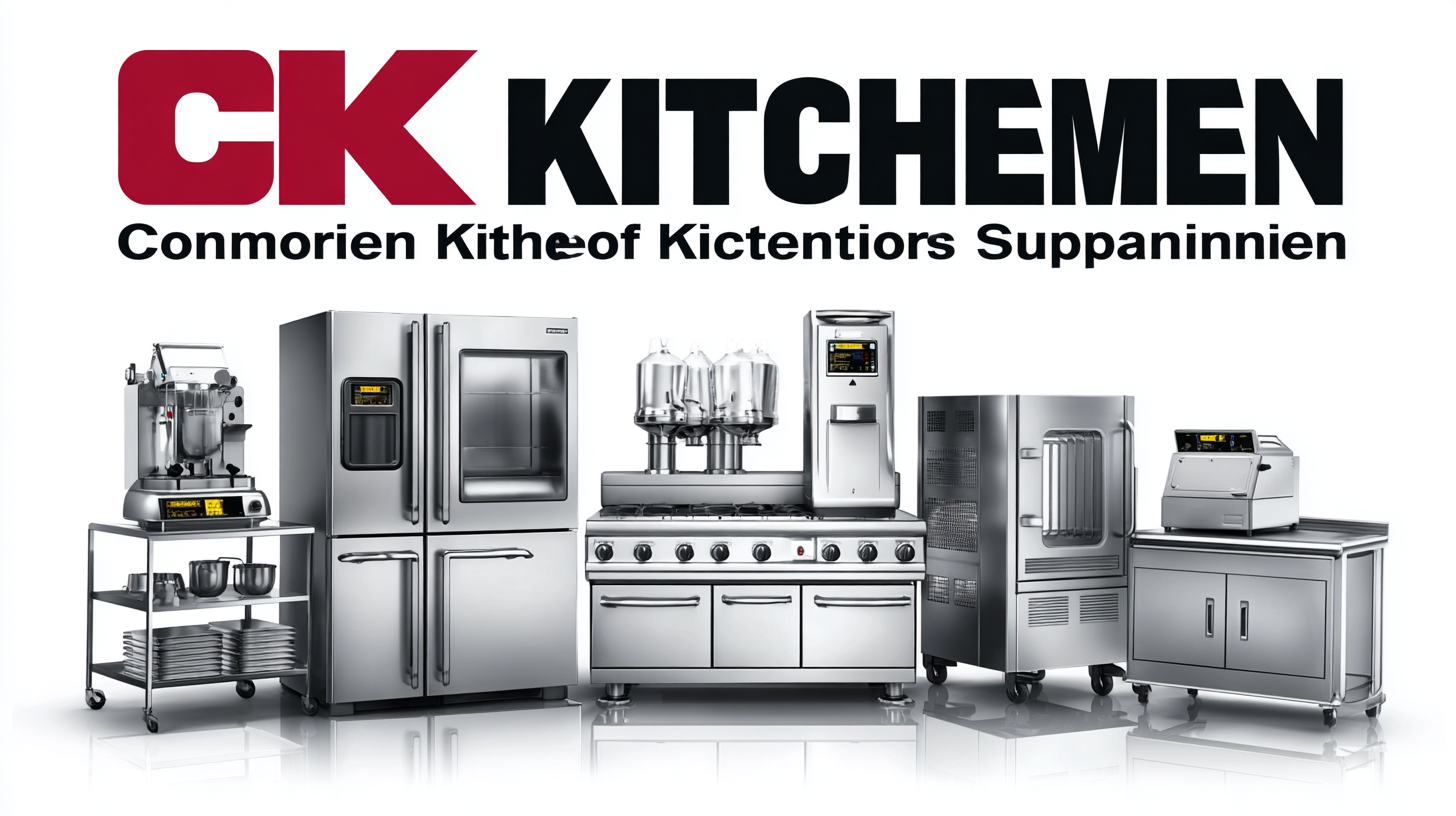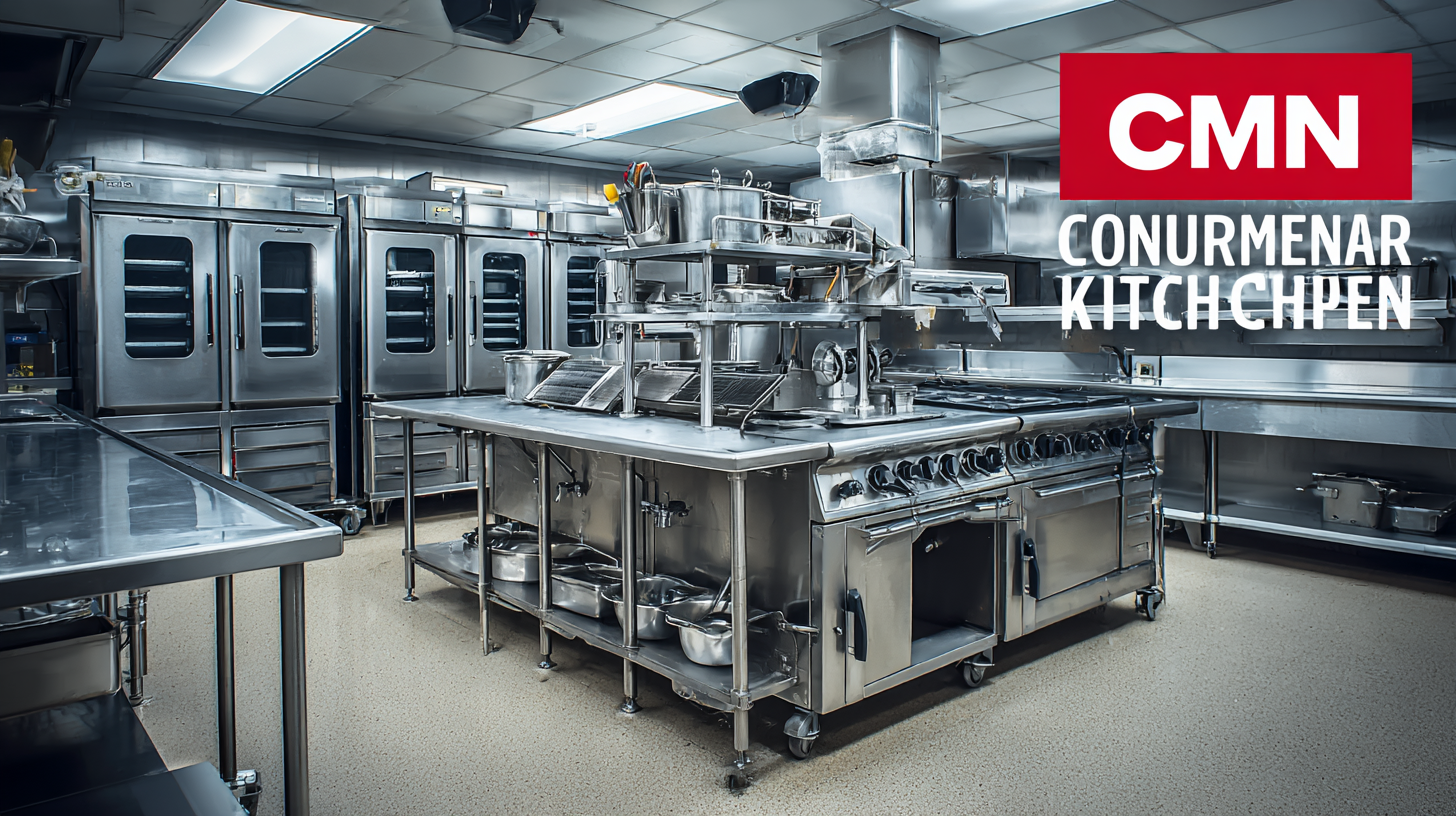Unlocking the Best Commercial Kitchen Equipment Specifications and How to Choose the Right One
In the fast-paced world of the culinary industry, selecting the right Commercial Kitchen Equipment is crucial for optimizing efficiency and ensuring high-quality food service. According to a recent industry report by IBISWorld, the commercial kitchen equipment market is projected to reach $21 billion in revenue by 2024, reflecting a growing demand for advanced technologies and sustainable solutions. However, choosing the best equipment can be a daunting task for restaurateurs and chefs alike, as inadequate or outdated equipment can lead to operational inefficiencies and increased overhead costs. A systematic approach to understanding the various specifications and features of available equipment is essential, helping businesses navigate potential pitfalls and ultimately enhance their kitchen operations. This blog will delve into common problems associated with Commercial Kitchen Equipment and provide guidance on how to choose the right tools to foster success in any food service environment.

The Importance of After-Sales Service in Commercial Kitchen Equipment
When investing in commercial kitchen equipment, one crucial aspect often overlooked is the importance of after-sales service. A reliable after-sales service can significantly impact your kitchen operations, ensuring that your equipment is maintained, repaired, and upgraded as needed. It fosters a long-term relationship with suppliers, ensuring immediate support in case of emergencies. This is especially critical in a bustling kitchen environment where downtime can lead to significant losses.
Tips: Always inquire about the after-sales service policies before making a purchase. Look for suppliers who offer comprehensive support packages, including training, maintenance plans, and rapid response to service calls. Additionally, read reviews and get feedback from other business owners regarding the supplier's reliability and professionalism in after-sales service.
Choosing the right commercial kitchen equipment is not just about specifications and features. The support offered post-purchase plays a pivotal role in maximizing your investment. Having access to experienced technicians and a solid warranty can significantly reduce the stress of equipment breakdowns, allowing you to focus more on your culinary creations rather than repair schedules.
Tips: Establish a solid communication channel with your supplier to discuss any concerns post-purchase. Regularly scheduled maintenance visits can also prevent bigger issues from arising, extending the life of your kitchen equipment. Ultimately, investing in reliable after-sales service is just as important as selecting the right equipment in the first place.
Comparative Analysis of Commercial Kitchen Equipment Features
Evaluating Repair Costs vs. Equipment Longevity
When evaluating commercial kitchen equipment, one critical factor to consider is the balance between repair costs and equipment longevity. Investing in high-quality equipment can lead to significant long-term savings. While the initial purchase price may be higher, durable and reliable appliances often require fewer repairs and have longer lifespans. Rather than opting for the cheapest option, it’s essential to assess the overall value, which encompasses maintenance needs, replacement parts availability, and warranty support.
Furthermore, understanding the expected lifespan of the equipment can guide your purchasing decision. For instance, a well-maintained oven may last for over a decade, while a lower-quality one may need replacement after just a few years. It's advisable to research the manufacturer's reputation and read reviews from other professionals in the industry. By taking these factors into account, you can make a more informed choice that aligns with your operational needs and budget constraints, ensuring that your kitchen runs efficiently without frequent interruptions for repairs.
Unlocking the Best Commercial Kitchen Equipment Specifications and How to Choose the Right One - Evaluating Repair Costs vs. Equipment Longevity
| Equipment Type | Average Repair Cost ($) | Average Lifespan (Years) | Specifications | Ideal Frequency of Maintenance |
|---|---|---|---|---|
| Commercial Oven | 300 | 10 | Dual-fuel, Convection | Quarterly |
| Commercial Refrigerator | 250 | 15 | Reach-in, Energy Star | Biannually |
| Commercial Dishwasher | 400 | 8 | High-efficiency, Rack conveyor | Monthly |
| Commercial Range | 350 | 12 | 6 burner, Gas | Quarterly |
| Food Processor | 150 | 5 | Commercial-grade, 3 HP | Annually |
Understanding Warranties and Their Role in Equipment Selection
When investing in commercial kitchen equipment, understanding warranties is crucial for making informed decisions. Warranties serve as a safety net, protecting your investment against potential defects and malfunctions. A standard warranty usually covers parts and labor for a specific period, but it’s essential to delve deeper. Look for warranties that not only cover the equipment's initial purchase but also address specific components like the motor and heating elements, which are vital for kitchen operations.

Moreover, different manufacturers offer varied warranty terms that can significantly affect your long-term satisfaction and costs. It’s advisable to compare these warranties carefully. Some brands may provide extended coverage for an additional fee, while others might offer robust customer service and support that can be equally important. A reliable warranty can mean the difference between a smooth operational experience and unexpected expenses due to equipment failure. Therefore, understanding the nuances of warranties can greatly influence the selection process, ensuring your kitchen runs efficiently without undue financial strain.
Tips for Assessing Vendor Support and Maintenance Offerings
When investing in commercial kitchen equipment, assessing vendor support and maintenance offerings is crucial. A recent report from the Restaurant Equipment and Supply Association (RESA) highlights that nearly 65% of restaurant closures can be attributed to equipment-related failures. This statistic underscores the importance of reliable vendor support, as proactive maintenance can significantly extend the lifespan of commercial kitchen appliances. Vendors that offer comprehensive maintenance plans not only ensure equipment efficiency but also minimize downtime, allowing businesses to maintain productivity and avoid costly interruptions.
When evaluating vendors, it’s essential to inquire about their support structures. According to a survey by the National Restaurant Association, 72% of successful operators cite strong vendor relationships as a key factor in operational efficiency. Look for vendors who provide prompt service response times, transparent pricing for repairs, and access to spare parts. Additionally, a vendor that offers training programs for kitchen staff can enhance equipment utilization and reduce the risk of mishaps. By prioritizing these factors, business owners can make informed decisions that support their long-term operational goals.
How to Balance Initial Investment with Future Service Expenses
When selecting commercial kitchen equipment, balancing the initial investment with future service expenses is crucial for long-term profitability. According to a report by the Food Service Equipment Reports (FSER), businesses can expect service and maintenance costs to reach up to 15% of the initial purchase price of their equipment annually. Therefore, when choosing equipment, operators should consider not only the upfront costs but also the potential for ongoing expenses related to repairs and servicing.
Additionally, opting for high-quality equipment might translate into higher grade initial costs, but it often yields lower service expenses over time. A study by Technomic found that top-tier equipment brands can last 20% longer than budget alternatives, significantly reducing the overall lifetime cost. Moreover, investing in energy-efficient appliances can provide substantial savings on utility bills, further aiding in balancing the initial investment against future costs. Carefully evaluating the total cost of ownership will ensure that establishments can efficiently manage their budgets while maintaining top-caliber operations.

